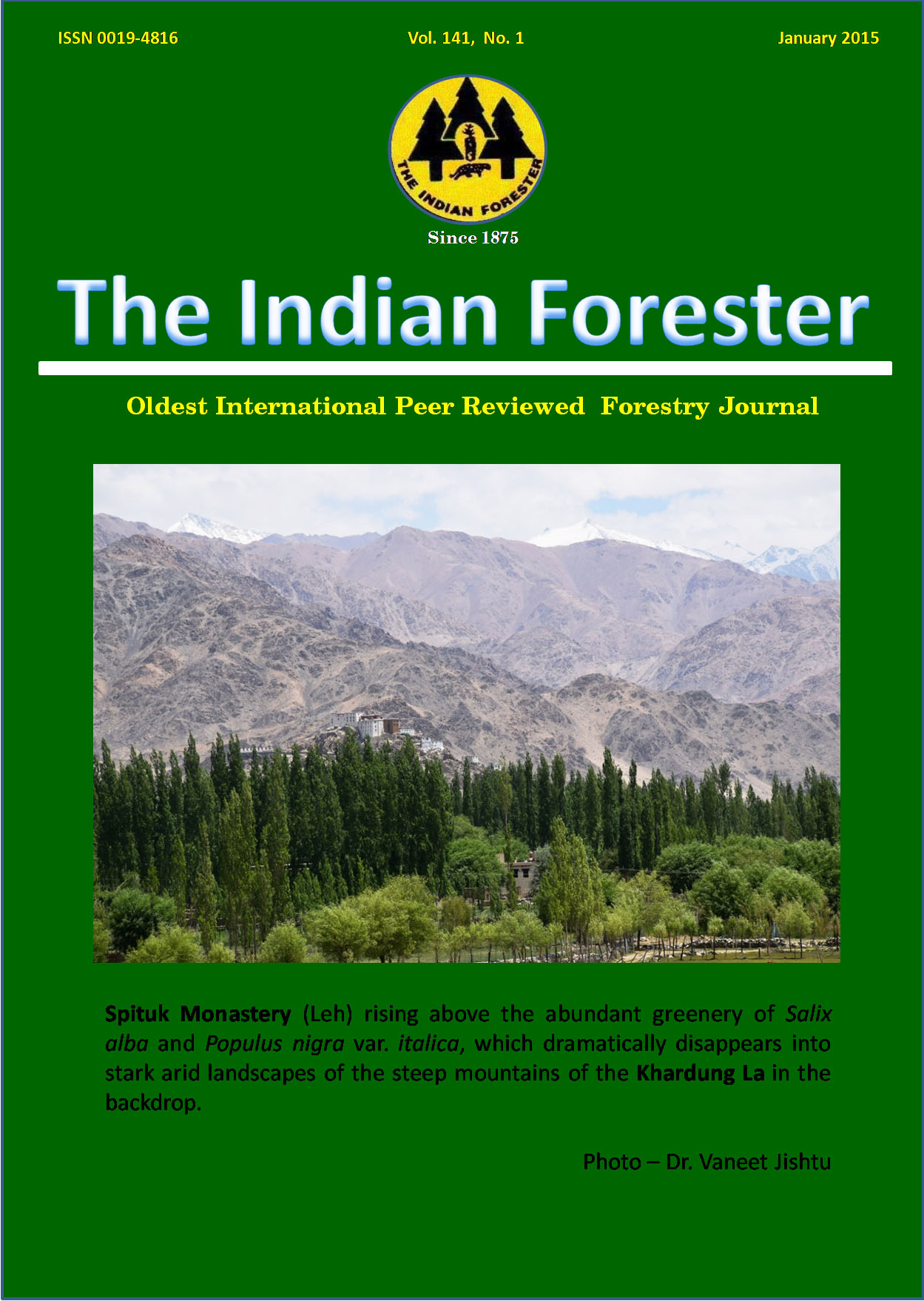Population Ecology and Regeneration Status of Buxus wallichiana (Himalayan Box Tree) in Rajouri-Poonch Districts, Jammu and Kashmir, India: Honing Red List of Plants
DOI:
https://doi.org/10.36808/if/2015/v141i1/56820Keywords:
Anthropogenic Pressure, Conservation Management, Himalayan Box Tree, Regeneration.Abstract
The Himalayan Box tree (Buxus wallichiana) is valuable and vulnerable tree associated with Rajouri-Poonch culture. Due to its manifold uses and utilization its risk of extinction has increased. The species does not regenerate well from seed that is another risk factor. The objective of this research was to investigate the population ecology of the data deficient tree species as a foundation for its conservation. Five forest communities in the Rajouri-Poonch district were sampled. The abundance of the species, impacts of harvesting and its current regeneration patterns indicated that it may soon be extirpated from the study area. A plan for conserving the remaining sub-populations is presented. It could provide a template for conservation in other locations where the species is at risk.References
Airi S., Rawal R.S., Dhar U., and Purohit A.N. (2000). Assessment of availability and habitat preference of Jatamansi- A critically endangered plant of west Himalaya, Current Science, 79: 10-25.
Anonymous (1997). The wealth of India: a dictionary of Indian raw materials and industrial products. Series: A-Z. NISCAIR, CSIR, New Delhi
Bhatt A., Joshi S.K. and Gairola S. (2005). Dactylorhiza hatagirea (D.Don) Soo – A west Himalayan orchid in peril. Current Science, 89: 610-612.
Cuaron A.D. (1993). Extinction rates estimates, Nature, 366: 18.
Curtis J.T. and Mc Intosh. (1950). The Inter relation of certain analytic and phytosociological character. Ecology, 31: 434-455.
Dhar U., Rawal R.S. and Samant S.S. (1997). Structural diversity and representativeness of forest vegetation in a protected area of Kumaun Himalaya, India: implications for conservation, Biodiversity and Conservation, 6: 1045 -1062.
Joshi H.C. and Samant S.S. (2004). Assessment of forest vegetation and conservation priorities of communities in a part of Nanda Devi Biosphere Reserve, West Himalaya. Part 1, International Journal of Sustainable Development and World Ecology, 11: 326-336.
Kersaw K.A. (1973). Quantitative and dynamic plant ecology. London: Second edition. Edward Arnold Limited.
Mueller-Dombois D. and Ellenberge H. (1974). Aims and methods of vegetation ecology. New York: John Willey and Sons.
Pant S. (2011). Buxus wallichiana L. A multipurpose Himalayan tree is in peril, International Journal of Biodiversity Conservation, 3(5): 175-177.
Polunin O., and Stainton A. (2010). Flowers of the Himalaya. Oxford University Press. Eleventh impression.
Pushpangadan P. and Nair K.N. (2001). Future of Systematics and Biodiversity Research in India: Need for a National Consortium and National Agenda for systematic biology research, Current Science, 80 (5): 631-638.
Samant S.S., Dhar U. and Rawal R.S. (1996). Conservation of rare endangered plants: The context of Nanda Devi Biosphere Reserve. In: Conservation and management of biological resources in Himalaya (P.S. Ramakrishnan, A.N. Purohit, K.G. Saxena, K.S. Rao, & R.K. Maikhuri Eds.), New Delhi, India, Oxford & IBH, pp. 521-545.
Server J. and Singh A. (2007). Chikarri - The box tree that sustains a cottage Industry. Souvenir, Centre for Biodiversity Studies, Baba Ghulam Shah Badshah University, Rajouri, 37-39.
Tilman D. (2000). Causes consequences and ethics of biodiversity, Nature, 405: 208-211.
Downloads
Downloads
Published
How to Cite
Issue
Section
License
Unless otherwise stated, copyright or similar rights in all materials presented on the site, including graphical images, are owned by Indian Forester.





